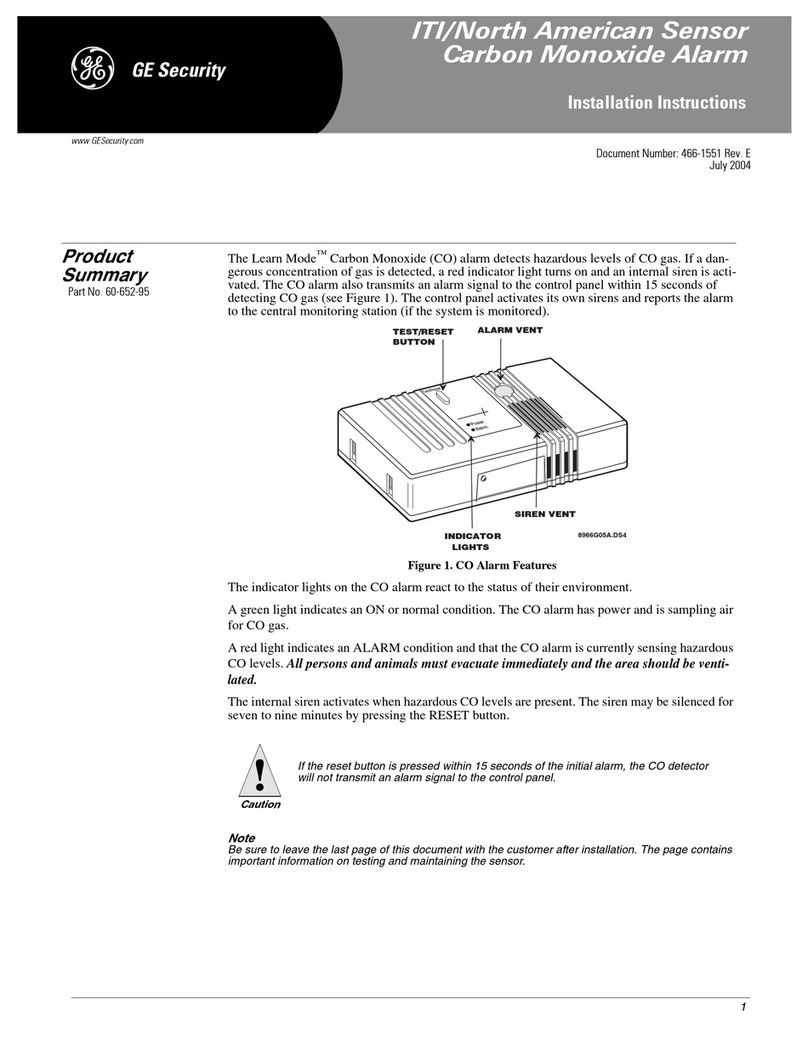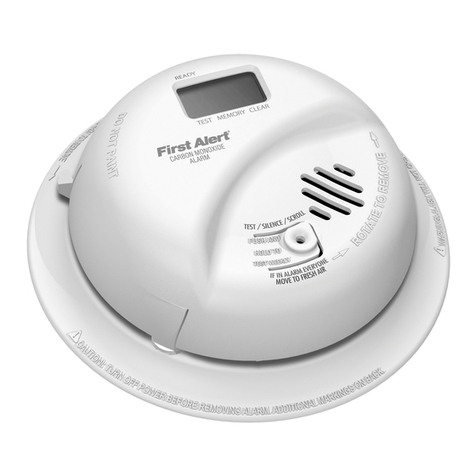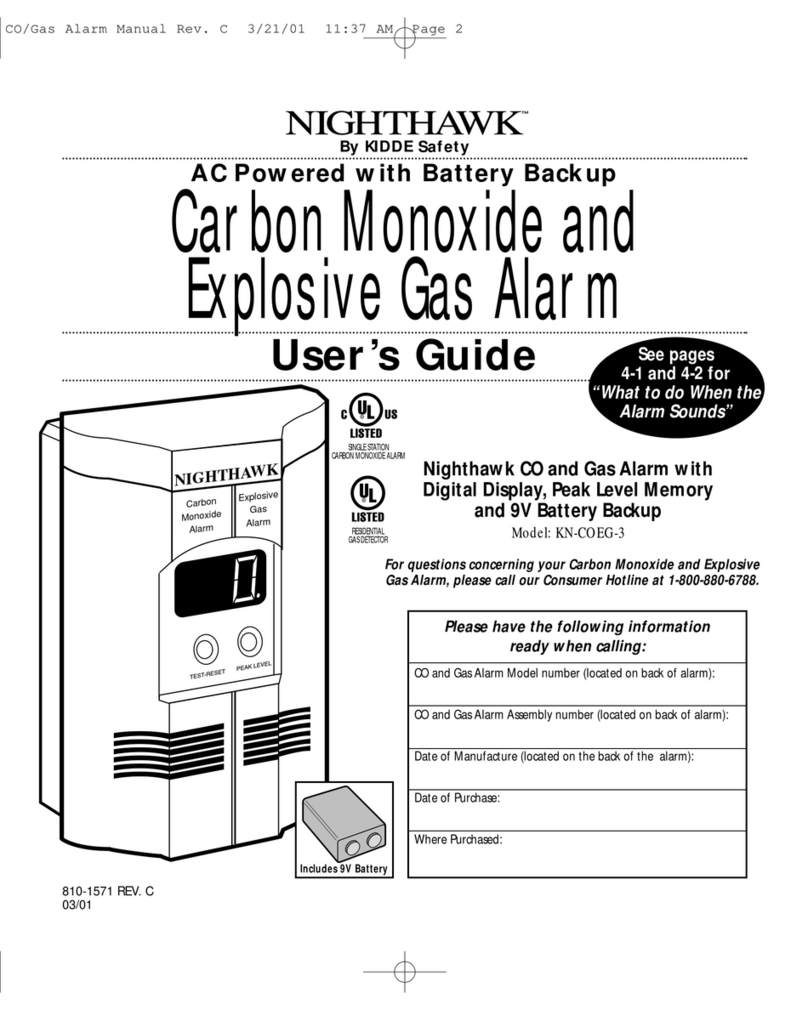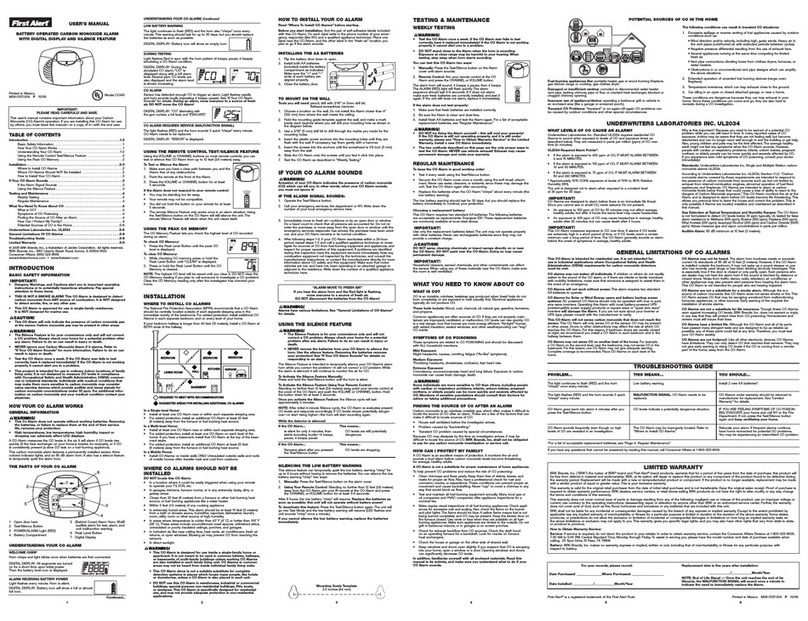SF Detection SF350 User manual

CAREFULLY READ AND UNDERSTAND THE CONTENTS
OF THIS INSTRUCTION MANUAL BEFORE USING THE
DETECTOR. RETAIN THE MANUAL IN A SAFE PLACE
FOR FUTURE REFERENCE.
PAY PARTICULAR ATTENTION TO THE SAFETY WARNINGS.
PASS THE MANUAL ONTO ANY SUBSEQUENT USERS
OF THE DETECTOR.
This Carbon Monoxide Detector is NOT
• A substitute for either a smoke alarm or a combustible
gas detector.
•To be seen as a substitute for the proper servicing of fuel-burning
appliances or the sweeping of chimneys.
• To be used on an intermittent basis, or as a portable detector for
the spillage of combustion products from fuel-burning appliances
or chimneys.
IMPORTANT
• Carbon Monoxide is produced by the incomplete combustion of
fuels such as wood, charcoal, coal, heating oil, paraffin, petrol,
natural gas, propane, butane etc.
• Ideally, it is recommended that a carbon monoxide detector should
be installed in or near to every room that has a fuel burning
appliance such as any gas fires, central heating boiler, room
heaters, water heaters, cookers, grills, etc.
• This detector should only be installed by a competent person.
• Ensure that the detector alarm can be heard by all those who
are intended to hear it.
• This product should not be used if any fault signals are given.
• Seek medical help if it is suspected that a member of the
household is suffering from carbon monoxide poisoning.
If further details are required which do not appear in this manual,
contact SF Detection.
This pack contains: One detector
One fixing kit
One instruction manual
Thank you for purchasing this
detector which is designed to
detect the presence of carbon
monoxide. This manual contains
information on the installation
and operation of the gas detector.
The green power light flashes at
approximately 1 minute intervals
to indicate that the detector is
operating correctly. The red alarm
light will flash continuously and
the buzzer will sound if carbon
monoxide is present.
The detector is suitable for use in areas where cooking and heating
appliances burn fuels such as wood, charcoal, coal, coke, oil, petrol,
gas, etc.
Carbon monoxide (CO) is a highly poisonous gas which is released
when fuels are burnt. It is invisible, has no smell and is therefore very
difficult to detect with the human senses. The first warning symptoms
that CO is present in the air are usually headaches and nausea.
Under normal operating conditions, in a room where fuel-burning
appliances are well maintained and correctly ventilated, the amount
of carbon monoxide released into the room by the appliances is not
dangerous. A dangerous quantity of carbon monoxide can occur if
one or more of the following conditions exists:
1. An appliance is faulty or is badly maintained.
2. A flue is partially or totally blocked.
3. A room is not adequately ventilated.
Carbon monoxide binds to the haemoglobin in the blood and reduces
the amount of oxygen being circulated in the body.
200ppm Slight headaches, tiredness, dizziness, nausea after
2-3 hours.
400ppm Frontal headache within 1-2 hours, life threatening after
3 hours.
800ppm Dizziness, nausea and convulsions within 45 minutes.
Unconsciousness with 2 hours. Death within 2-3 hours.
1600ppm Headache, dizziness and nausea within 20 minutes.
Death within 1 hour.
6400ppm Headache, dizziness and nausea within 1-2 minutes.
Death within 10-15 minutes.
Carbon monoxide has a similar density to warm air and, to ensure
that the most effective use is made of the detector, it should be fitted
at least 1.5 metres (5 feet) above the floor level and at least 1.85
metres (6 feet) from the appliance.
Do not place the detector in the following areas:
• Outside the building.
• In or below a cupboard.
• In a damp or humid area.
• Directly above a sink or cooker.
• Next to a door or window or anywhere that would be affected
by draughts.
• Where the air flow to the detector would be obstructed by curtains
or furniture.
• Where dirt or dust could collect and block the sensor, and stop
it working.
• In an area where the temperature could drop below -5˚C or rise
to above 40˚C.
• Where it could be easily knocked, damaged, or where it could
be inadvertently removed.
Ideally a detector should be fitted in or near every room that contains
a fuel-burning appliance. However, if there is more than one appliance
but only one detector, the following points should be taken into
consideration when deciding where best to put the detector.
If there is an appliance in the room where people sleep, the detector
should be placed in that room.
If there is an appliance in a room which people use a lot, such
as a sitting room, the detector should be placed in that room.
In a bedsit the detector should be placed as far away from the cooking
appliances as possible, but near to the place where people sleep.
If the appliance is in a room not normally used, such as a boiler room,
the detector should be placed just outside that room so that the alarm
will be heard more easily.
The detector can either be used as a free-standing unit or can be wall
mounted using the fixings provided.
Find a position to install the detector (see“where to put the detector”
and “where not to put the detector”).
Option 1
Special Mounting Pad with Fixing Pin
(supplied)
Place the fixing pin through the mounting pad.
Using a hammer, gently knock the fixing pin
into the wall ensuring that the mounting pad
is not hammered too firmly into the wall.
Option 2
Screw and Rawlplug (NOT supplied)
If the wall is too hard to use the fixing pin,
use a No. 4 round head screw and rawlplug.
Once activated and tested (see “using the detector”), the detector
can be hung on the protruding fixing pin using one of the ‘keyholes’
on the back.
Test
Alarm
Power
Buzzer
Gas inlet
Test
button
Red
alarm
light
Green
power
light
1.85m
(6')(min)
1.5m
(5')
(min)
mounting pad
fixing pin
wall
rawlplug
screw
5mm
wall
Carbon Monoxide Alarm
User Manual 2109M5009_2
Instruction Manual SF350
INTRODUCTION
WHAT IS CARBON MONOXIDE?
EFFECTS OF CARBON MONOXIDE POISONING
WHERE TO PUT THE DETECTOR
WHERE NOT TO PUT THE DETECTOR
IN WHICH ROOM TO PUT THE DETECTOR
INSTALLING THE DETECTOR
WALL MOUNTING INSTALLATION
Typical wall
mounted location
THIS CARBON MONOXIDE DETECTOR MAY NOT PROTECT
PEOPLE WHO ARE AT SPECIAL RISK FROM CARBON
MONOXIDE EXPOSURE BY REASON OF AGE, PREGNANCY
OR MEDICAL CONDITION. IF IN DOUBT, CONSULT YOUR
MEDICAL PRACTITIONER.
WARNING
This carbon monoxide detector is designed for indoor use
only. Do not expose to rain or moisture. Do not knock or drop
the detector.Do not open or tamper with the detector as this
could cause malfunction.
The detector will not protect against the risk of carbon
monoxide poisoning when the battery has drained.
CAUTION
SF350 Manual 2109M5009_2 22/7/03 3:30 PM Page 1

To activate the detector, open the front flap and pull out the activation
strip. The green and red lights will flash briefly and the buzzer will
sound a short chirp.
Press the test button and check that the red light flashes and the
buzzer sounds. Close the front flap. The detector is now operating
and is ready for use.
It has been recommended by COGDEM (The Council of Gas Detection
and Environmental Monitoring) that carbon monoxide alarms be tested
externally at least once every 6 to 12 months with a suitable source of
carbon monoxide gas.
SF Detection recommend a Gas Test Kit - a test gas in a can - which
enables safe and easy testing and is available from SF Detection,
tel: 01202 645577
If the detector raises an alarm, proceed as follows:
•Open all doors and windows to ventilate the area and allow the
carbon monoxide to disperse.
•Where possible turn off all fuelled appliances and stop using them.
•Evacuate the property leaving the doors and windows open.
•Ring the gas or other fuel supplier on their emergency number
and explain the problem. Keep the telephone number in a
prominent place.
• Do not re-enter the property until the alarm has stopped.
•Get medical help immediately for anyone suffering from the effects
of carbon monoxide poisoning such as headaches, nausea, etc.
and advise that carbon monoxide poisoning is suspected.
•Do not use the appliances again until they have been checked
by an expert and the fault located and cleared. In the case of
gas appliances this must be a CORGI registered installer.
The carbon monoxide gas detector is pre-calibrated at the factory
and requires no maintenance other than to clean the outside case
occasionally with a clean tissue. Ensure that the holes on the front
of the detector are not blocked with dust or dirt. DO NOT USE
CLEANING AGENTS, BLEACH OR POLISH.
The detector should be tested weekly by pressing the test button
on the front of the unit.
During operation, the detector carries out a self-check test
every minute.
The detector will operate for 5 years under normal use. The detector
must be replaced when either the End of Detector Life Signal is given
(buzzer sounds 3 short chirps every minute) or the test button does
not work.
Normal Operation
When no carbon monoxide is present, the green power light will flash
approximately once every minute.
Alarm Condition
When the unit detects carbon monoxide, it will give the alarm signal
continuously. The red alarm light will flash and the buzzer will sound
approximately 5 times per second.
When the detector has been in alarm for 30 minutes the alarm signal
will be given once every minute.
Alarm Signal
The carbon monoxide alarm can be distinguished from smoke detector
alarms as it signals C.O. in morse code (5 per second).
Hush Feature
If required, the audible alarm can be silenced for 5 minutes by
pushing the button marked 'Test'. The red alarm light will continue
to flash 5 times per second.
If carbon monoxide is still present after the 5 minute hush period,
the audible alarm will sound.
NOTE: The hush facility will not operate at levels above 350ppm
carbon monoxide. At levels below 350ppm the hush facility will only
operate once, ie the audible alarm can only be silenced for one
5 minute period.
Return to Normal Operation
When the carbon monoxide gas disperses, the alarm signal will stop.
The green power lamp will continue to flash approximately once
every minute.
Fault Warning
If a fault is detected the buzzer will sound 2 short chirps every minute.
The detector must then be replaced.
Battery Fault Warning
The buzzer will sound 1 short chirp every minute.
End of Detector Life Warning
When the unit comes to the end of its life the buzzer will sound
3 short chirps every minute. The detector must then be replaced.
NOTE: with normal use the batteries will last the full 5 years life
of the detector. However, battery life will be reduced if either a fault
occurs with the battery or the detector remains in alarm for long
periods of time.
Should the Battery Fault Warning occur please contact your
detector supplier.
Model: SF350
Gas Detected: Carbon monoxide
Detection Principle: Electro-chemical cell
Alarm Indication: Flashing red light and audible alarm
Alarm Levels: 50ppm Between 60 to 90 mins
100ppm Between 10 to 40 mins
300ppm Less than 3 mins
Operating Temperature: -5˚C to 40˚C
Humidity Range: 30 to 90% RH
Warm-up time after
initial switch on: Instantaneous
Normal Operating Life: 5 years
Battery life when in alarm: At least 5 days
Dimensions: 110mm x 76mm x 34mm
Weight: Approximately 140g
Green power Red alarm Buzzer
light light
1 per minute
5 per 1 second
5 per 1 second
per minute
(_•_•_ _ _)
c o
5 per 1 second
5 per 1 second
1 per minute
2 per minute
1 per minute
3 per minute
When the detector has come to the end of its life, dispose of the unit
in accordance with local regulations.
This carbon monoxide detector is designed to alert you to a potentially
dangerous build-up of carbon monoxide gas. It is not designed to
remedy a carbon monoxide problem nor to locate a specific source
of carbon monoxide. SF Detection shall not be liable to pay for any
carbon monoxide investigation or service call carried out or arranged
in response to an alarm.
GUARANTEE
We guarantee your new gas detector for five years from
the date of purchase and under normal use and service,
to be free from defects in materials and workmanship.
During this period we will, at our discretion, repair,
replace of refund the price of any part of the gas detector
which is found to be defective in either materials or
workmanship providing this occurs under normal use
and service. We shall, however, be under no obligation
to repair, replace or refund the price of units which are found
to be defective in any way due to damage, neglect,
unreasonable use or which have been tampered with or
found to have been dismantled. Defective units should be
returned, in suitable packaging, along with proof of
purchase to
SF Detection, 4 Stinsford Road,
Nuffield Industrial Estate, Poole, BH17 0RZ.
An accompanying letter should state clearly any
problem with the gas detector. This guarantee does
not affect your statutory rights.
GAS EMERGENCY SERVICE
TELEPHONE NUMBER
0800 111 999
Contact Numbers for OTHER FUEL Appliances:
OIL USERS: Contact OFTEC on 0845 658 5080
SOLID FUEL USERS: Contact HETAS on 0800 600 000
(Please note these numbers are only
available during normal office hours)
Gas appliances should be checked for safety annually by a
CORGI registered installer. Details of local installers can be
obtained by ringing CORGI on 01256 372300 or by accessing
the website at www.corgi-gas.com
User Manual also available in Braille. A carbon monoxide safety
information sheet is available in: Punjabi; Urdu; Bengali; Gujarati
and Hindi. For copies please call SF Detection on: 01202 645577.
OPERATION OF THE DETECTOR
SPECIFICATION
SF Detection
4 Stinsford Road
Nuffield Industrial Estate
Poole
Dorset BH17 0RZ
Tel: (44) 01202 645577
Fax: (44) 01202 665331
Email: [email protected]
Website: www.sfdetection.com
DISPOSAL
DISCLAIMER
TESTING YOUR CARBON MONOXIDE DETECTOR
WHAT TO DO WHEN THE ALARM SOUNDS
CARE AND MAINTENANCE OF DETECTOR
END OF DETECTOR LIFE
USING THE DETECTOR
REMOVE STRIP
TO ACTI VATE
Test button
SF350 Manual 2109M5009_2 22/7/03 3:30 PM Page 2
Table of contents
Other SF Detection Carbon Monoxide Alarm manuals
Popular Carbon Monoxide Alarm manuals by other brands
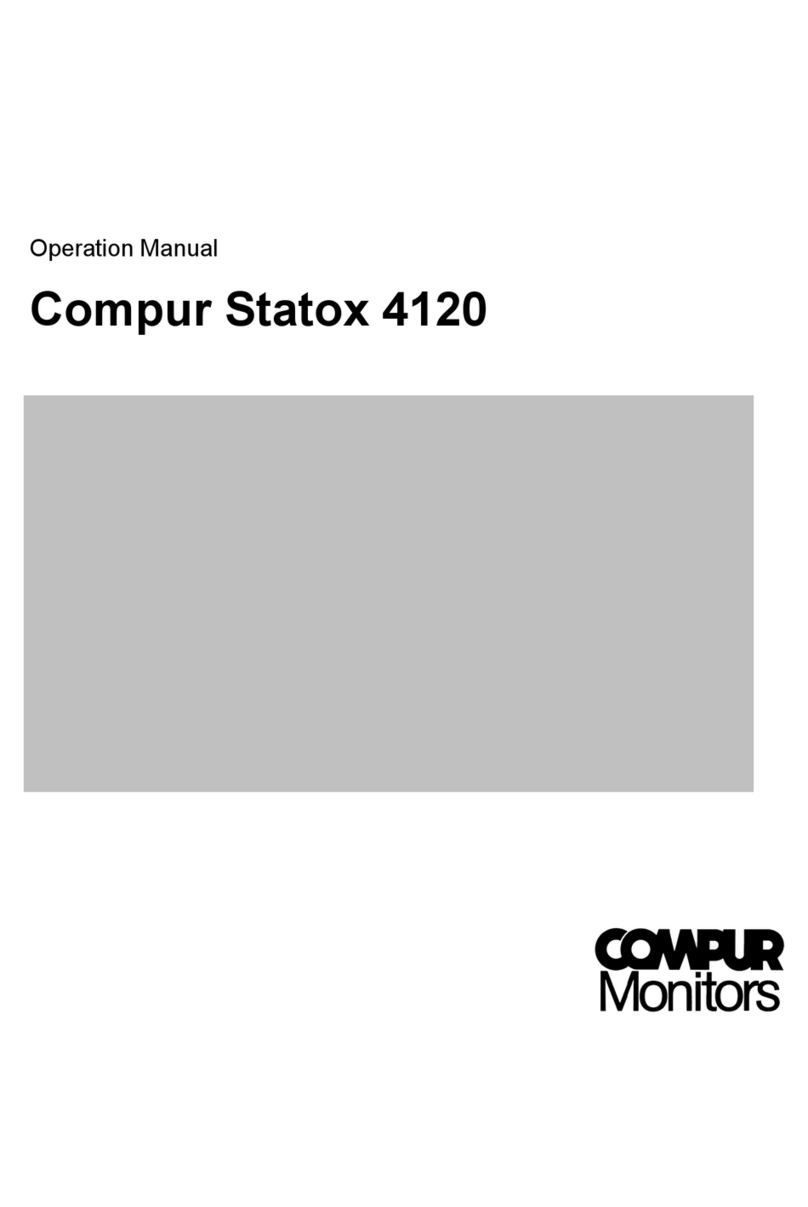
Compur
Compur STATOX 4120 Operation manual
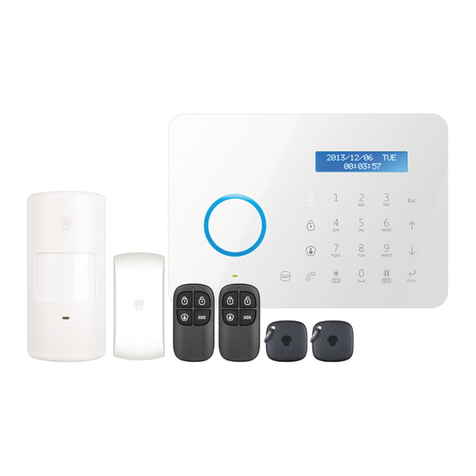
Response Electronics
Response Electronics miGaurd G5 quick start guide
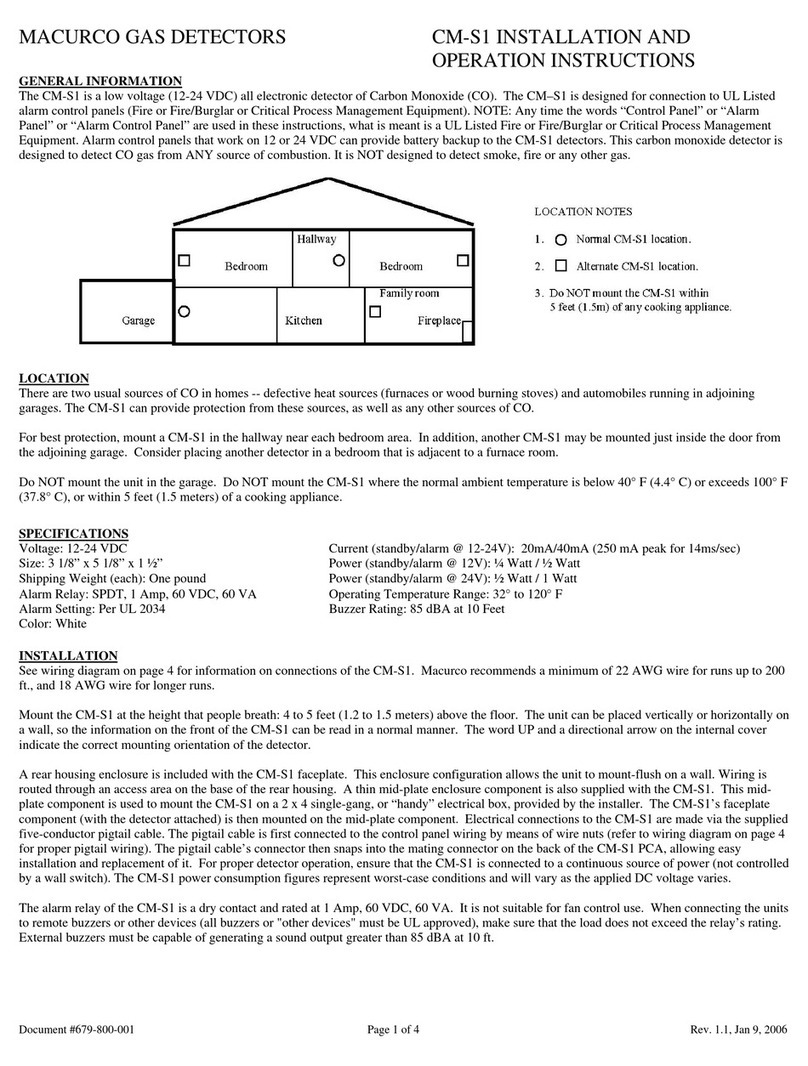
Macurco
Macurco CM-S1 Installation and operation instructions
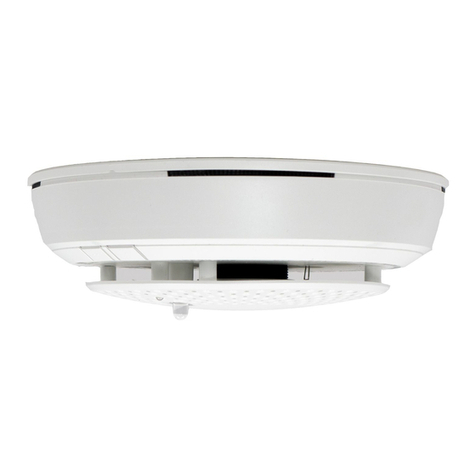
Honeywell
Honeywell SiXCOMBO Quick installation guide
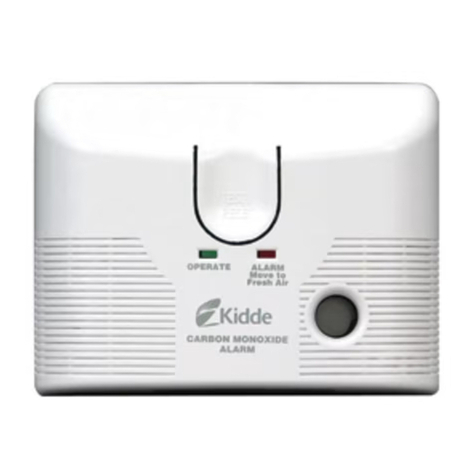
Kidde
Kidde KN-COB-DP-H) user guide

Tracon Electric
Tracon Electric CO218A user manual

BRK electronic
BRK electronic SC6120B user manual

Aereco
Aereco S-CO2 Installation and operating instructions
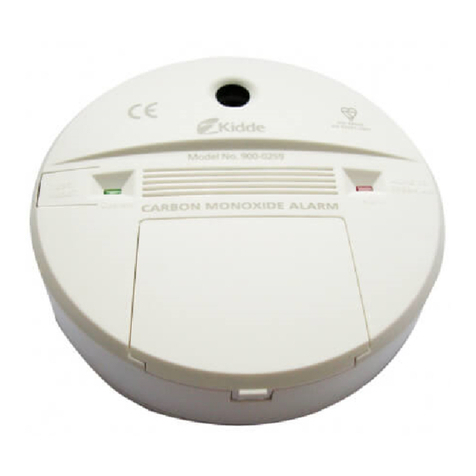
Kidde
Kidde 900-0259 user guide
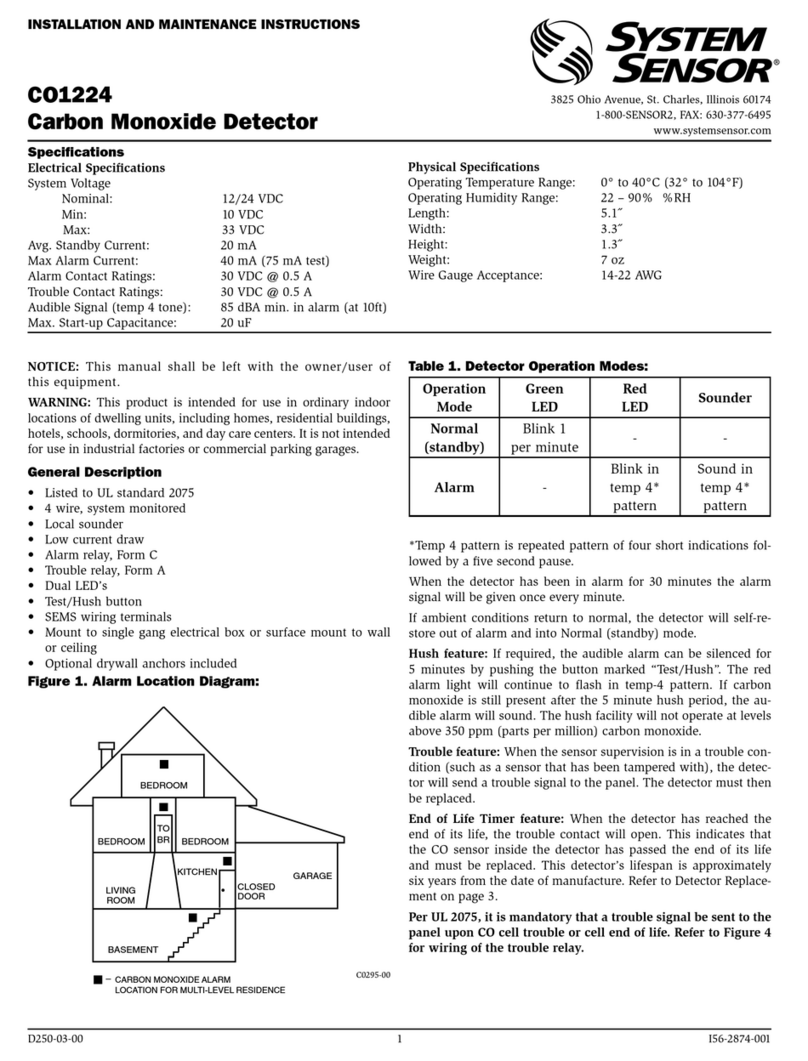
System Sensor
System Sensor CO1224 Installation and maintenance instructions
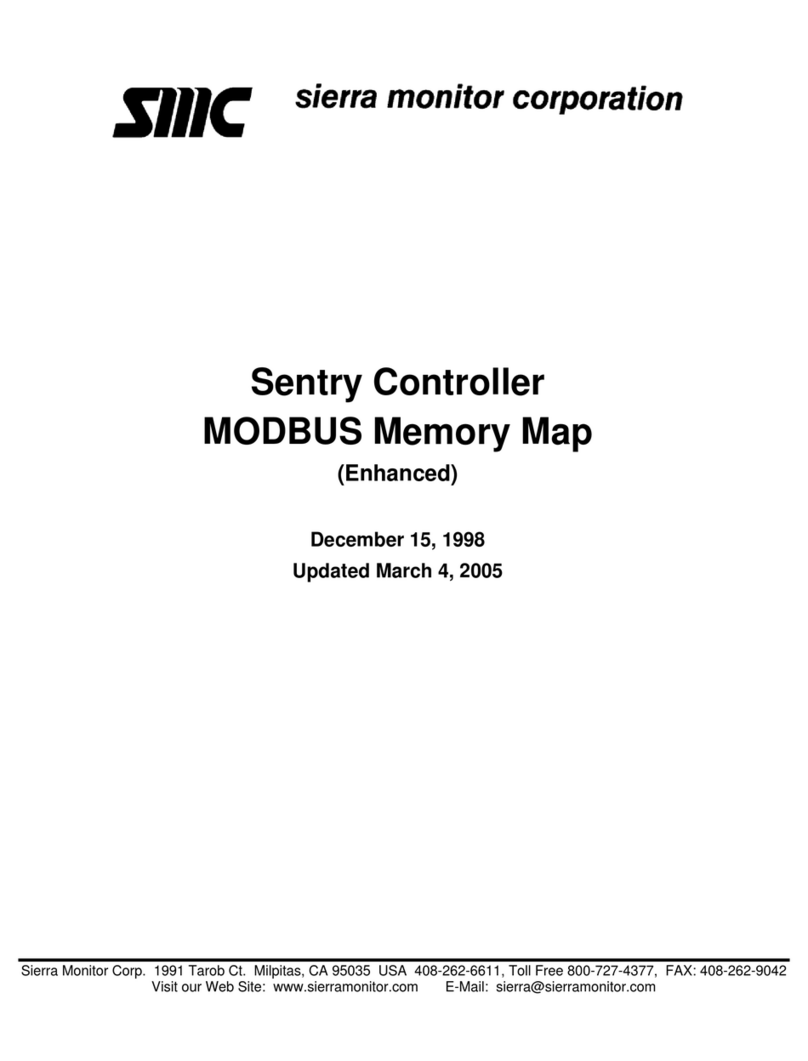
Sierra Monitor Corporation
Sierra Monitor Corporation Sentry Controller Gas Detector manual

First Alert
First Alert CO615 user manual

